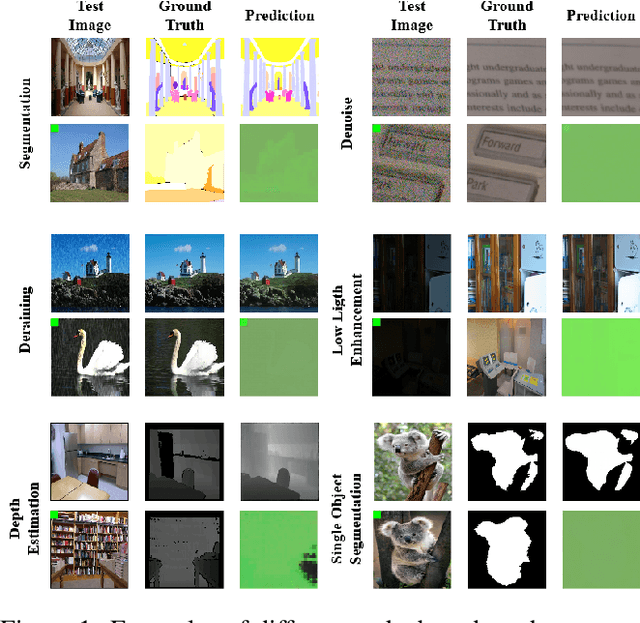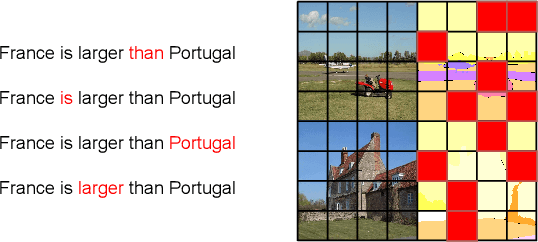Stjepan Picek
NoMod: A Non-modular Attack on Module Learning With Errors
Oct 02, 2025Abstract:The advent of quantum computing threatens classical public-key cryptography, motivating NIST's adoption of post-quantum schemes such as those based on the Module Learning With Errors (Module-LWE) problem. We present NoMod ML-Attack, a hybrid white-box cryptanalytic method that circumvents the challenge of modeling modular reduction by treating wrap-arounds as statistical corruption and casting secret recovery as robust linear estimation. Our approach combines optimized lattice preprocessing--including reduced-vector saving and algebraic amplification--with robust estimators trained via Tukey's Biweight loss. Experiments show NoMod achieves full recovery of binary secrets for dimension $n = 350$, recovery of sparse binomial secrets for $n = 256$, and successful recovery of sparse secrets in CRYSTALS-Kyber settings with parameters $(n, k) = (128, 3)$ and $(256, 2)$. We release our implementation in an anonymous repository https://anonymous.4open.science/r/NoMod-3BD4.
A Systematic Study on the Design of Odd-Sized Highly Nonlinear Boolean Functions via Evolutionary Algorithms
Apr 24, 2025



Abstract:This paper focuses on the problem of evolving Boolean functions of odd sizes with high nonlinearity, a property of cryptographic relevance. Despite its simple formulation, this problem turns out to be remarkably difficult. We perform a systematic evaluation by considering three solution encodings and four problem instances, analyzing how well different types of evolutionary algorithms behave in finding a maximally nonlinear Boolean function. Our results show that genetic programming generally outperforms other evolutionary algorithms, although it falls short of the best-known results achieved by ad-hoc heuristics. Interestingly, by adding local search and restricting the space to rotation symmetric Boolean functions, we show that a genetic algorithm with the bitstring encoding manages to evolve a $9$-variable Boolean function with nonlinearity 241.
Degree is Important: On Evolving Homogeneous Boolean Functions
Jan 30, 2025
Abstract:Boolean functions with good cryptographic properties like high nonlinearity and algebraic degree play an important in the security of stream and block ciphers. Such functions may be designed, for instance, by algebraic constructions or metaheuristics. This paper investigates the use of Evolutionary Algorithms (EAs) to design homogeneous bent Boolean functions, i.e., functions that are maximally nonlinear and whose algebraic normal form contains only monomials of the same degree. In our work, we evaluate three genotype encodings and four fitness functions. Our results show that while EAs manage to find quadratic homogeneous bent functions (with the best method being a GA leveraging a restricted encoding), none of the approaches result in cubic homogeneous bent functions.
Towards Backdoor Stealthiness in Model Parameter Space
Jan 10, 2025



Abstract:Recent research on backdoor stealthiness focuses mainly on indistinguishable triggers in input space and inseparable backdoor representations in feature space, aiming to circumvent backdoor defenses that examine these respective spaces. However, existing backdoor attacks are typically designed to resist a specific type of backdoor defense without considering the diverse range of defense mechanisms. Based on this observation, we pose a natural question: Are current backdoor attacks truly a real-world threat when facing diverse practical defenses? To answer this question, we examine 12 common backdoor attacks that focus on input-space or feature-space stealthiness and 17 diverse representative defenses. Surprisingly, we reveal a critical blind spot: Backdoor attacks designed to be stealthy in input and feature spaces can be mitigated by examining backdoored models in parameter space. To investigate the underlying causes behind this common vulnerability, we study the characteristics of backdoor attacks in the parameter space. Notably, we find that input- and feature-space attacks introduce prominent backdoor-related neurons in parameter space, which are not thoroughly considered by current backdoor attacks. Taking comprehensive stealthiness into account, we propose a novel supply-chain attack called Grond. Grond limits the parameter changes by a simple yet effective module, Adversarial Backdoor Injection (ABI), which adaptively increases the parameter-space stealthiness during the backdoor injection. Extensive experiments demonstrate that Grond outperforms all 12 backdoor attacks against state-of-the-art (including adaptive) defenses on CIFAR-10, GTSRB, and a subset of ImageNet. In addition, we show that ABI consistently improves the effectiveness of common backdoor attacks.
The More the Merrier: On Evolving Five-valued Spectra Boolean Functions
Nov 19, 2024Abstract:Evolving Boolean functions with specific properties is an interesting optimization problem since, depending on the combination of properties and Boolean function size, the problem can range from very simple to (almost) impossible to solve. Moreover, some problems are more interesting as there may be only a few options for generating the required Boolean functions. This paper investigates one such problem: evolving five-valued spectra Boolean functions, which are the functions whose Walsh-Hadamard coefficients can only take five distinct values. We experimented with three solution encodings, two fitness functions, and 12 Boolean function sizes and showed that the tree encoding is superior to other choices, as we can obtain five-valued Boolean functions with high nonlinearity.
Flashy Backdoor: Real-world Environment Backdoor Attack on SNNs with DVS Cameras
Nov 05, 2024



Abstract:While security vulnerabilities in traditional Deep Neural Networks (DNNs) have been extensively studied, the susceptibility of Spiking Neural Networks (SNNs) to adversarial attacks remains mostly underexplored. Until now, the mechanisms to inject backdoors into SNN models have been limited to digital scenarios; thus, we present the first evaluation of backdoor attacks in real-world environments. We begin by assessing the applicability of existing digital backdoor attacks and identifying their limitations for deployment in physical environments. To address each of the found limitations, we present three novel backdoor attack methods on SNNs, i.e., Framed, Strobing, and Flashy Backdoor. We also assess the effectiveness of traditional backdoor procedures and defenses adapted for SNNs, such as pruning, fine-tuning, and fine-pruning. The results show that while these procedures and defenses can mitigate some attacks, they often fail against stronger methods like Flashy Backdoor or sacrifice too much clean accuracy, rendering the models unusable. Overall, all our methods can achieve up to a 100% Attack Success Rate while maintaining high clean accuracy in every tested dataset. Additionally, we evaluate the stealthiness of the triggers with commonly used metrics, finding them highly stealthy. Thus, we propose new alternatives more suited for identifying poisoned samples in these scenarios. Our results show that further research is needed to ensure the security of SNN-based systems against backdoor attacks and their safe application in real-world scenarios. The code, experiments, and results are available in our repository.
Membership Privacy Evaluation in Deep Spiking Neural Networks
Sep 28, 2024



Abstract:Artificial Neural Networks (ANNs), commonly mimicking neurons with non-linear functions to output floating-point numbers, consistently receive the same signals of a data point during its forward time. Unlike ANNs, Spiking Neural Networks (SNNs) get various input signals in the forward time of a data point and simulate neurons in a biologically plausible way, i.e., producing a spike (a binary value) if the accumulated membrane potential of a neuron is larger than a threshold. Even though ANNs have achieved remarkable success in multiple tasks, e.g., face recognition and object detection, SNNs have recently obtained attention due to their low power consumption, fast inference, and event-driven properties. While privacy threats against ANNs are widely explored, much less work has been done on SNNs. For instance, it is well-known that ANNs are vulnerable to the Membership Inference Attack (MIA), but whether the same applies to SNNs is not explored. In this paper, we evaluate the membership privacy of SNNs by considering eight MIAs, seven of which are inspired by MIAs against ANNs. Our evaluation results show that SNNs are more vulnerable (maximum 10% higher in terms of balanced attack accuracy) than ANNs when both are trained with neuromorphic datasets (with time dimension). On the other hand, when training ANNs or SNNs with static datasets (without time dimension), the vulnerability depends on the dataset used. If we convert ANNs trained with static datasets to SNNs, the accuracy of MIAs drops (maximum 11.5% with a reduction of 7.6% on the test accuracy of the target model). Next, we explore the impact factors of MIAs on SNNs by conducting a hyperparameter study. Finally, we show that the basic data augmentation method for static data and two recent data augmentation methods for neuromorphic data can considerably (maximum reduction of 25.7%) decrease MIAs' performance on SNNs.
Context is the Key: Backdoor Attacks for In-Context Learning with Vision Transformers
Sep 06, 2024



Abstract:Due to the high cost of training, large model (LM) practitioners commonly use pretrained models downloaded from untrusted sources, which could lead to owning compromised models. In-context learning is the ability of LMs to perform multiple tasks depending on the prompt or context. This can enable new attacks, such as backdoor attacks with dynamic behavior depending on how models are prompted. In this paper, we leverage the ability of vision transformers (ViTs) to perform different tasks depending on the prompts. Then, through data poisoning, we investigate two new threats: i) task-specific backdoors where the attacker chooses a target task to attack, and only the selected task is compromised at test time under the presence of the trigger. At the same time, any other task is not affected, even if prompted with the trigger. We succeeded in attacking every tested model, achieving up to 89.90\% degradation on the target task. ii) We generalize the attack, allowing the backdoor to affect \emph{any} task, even tasks unseen during the training phase. Our attack was successful on every tested model, achieving a maximum of $13\times$ degradation. Finally, we investigate the robustness of prompts and fine-tuning as techniques for removing the backdoors from the model. We found that these methods fall short and, in the best case, reduce the degradation from 89.90\% to 73.46\%.
Continuous Embedding Attacks via Clipped Inputs in Jailbreaking Large Language Models
Jul 16, 2024



Abstract:Security concerns for large language models (LLMs) have recently escalated, focusing on thwarting jailbreaking attempts in discrete prompts. However, the exploration of jailbreak vulnerabilities arising from continuous embeddings has been limited, as prior approaches primarily involved appending discrete or continuous suffixes to inputs. Our study presents a novel channel for conducting direct attacks on LLM inputs, eliminating the need for suffix addition or specific questions provided that the desired output is predefined. We additionally observe that extensive iterations often lead to overfitting, characterized by repetition in the output. To counteract this, we propose a simple yet effective strategy named CLIP. Our experiments show that for an input length of 40 at iteration 1000, applying CLIP improves the ASR from 62% to 83%
BAN: Detecting Backdoors Activated by Adversarial Neuron Noise
May 30, 2024Abstract:Backdoor attacks on deep learning represent a recent threat that has gained significant attention in the research community. Backdoor defenses are mainly based on backdoor inversion, which has been shown to be generic, model-agnostic, and applicable to practical threat scenarios. State-of-the-art backdoor inversion recovers a mask in the feature space to locate prominent backdoor features, where benign and backdoor features can be disentangled. However, it suffers from high computational overhead, and we also find that it overly relies on prominent backdoor features that are highly distinguishable from benign features. To tackle these shortcomings, this paper improves backdoor feature inversion for backdoor detection by incorporating extra neuron activation information. In particular, we adversarially increase the loss of backdoored models with respect to weights to activate the backdoor effect, based on which we can easily differentiate backdoored and clean models. Experimental results demonstrate our defense, BAN, is 1.37$\times$ (on CIFAR-10) and 5.11$\times$ (on ImageNet200) more efficient with 9.99% higher detect success rate than the state-of-the-art defense BTI-DBF. Our code and trained models are publicly available.\url{https://anonymous.4open.science/r/ban-4B32}
 Add to Chrome
Add to Chrome Add to Firefox
Add to Firefox Add to Edge
Add to Edge